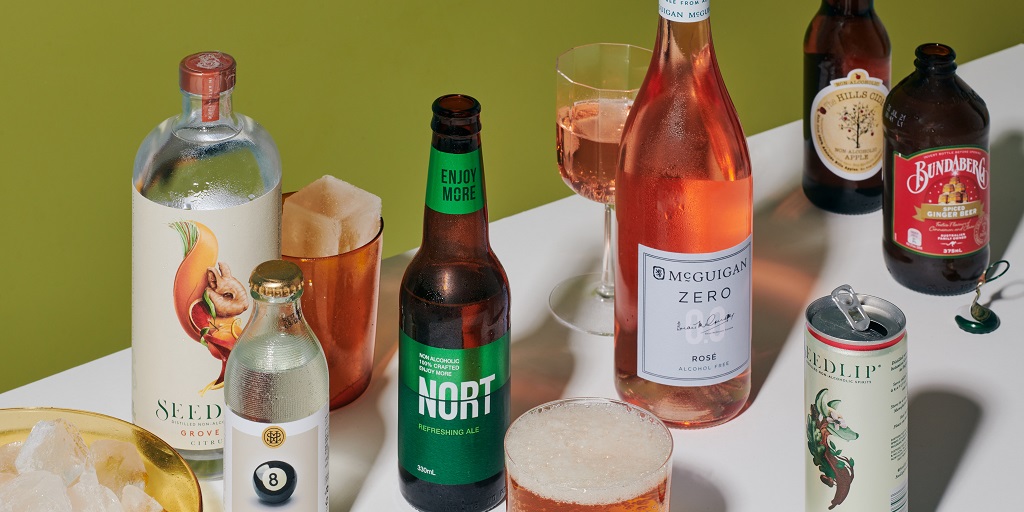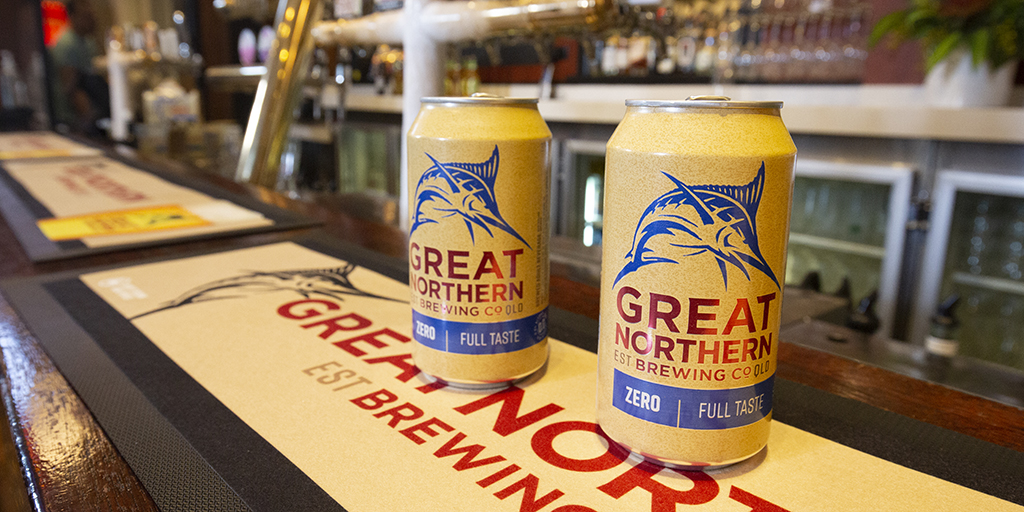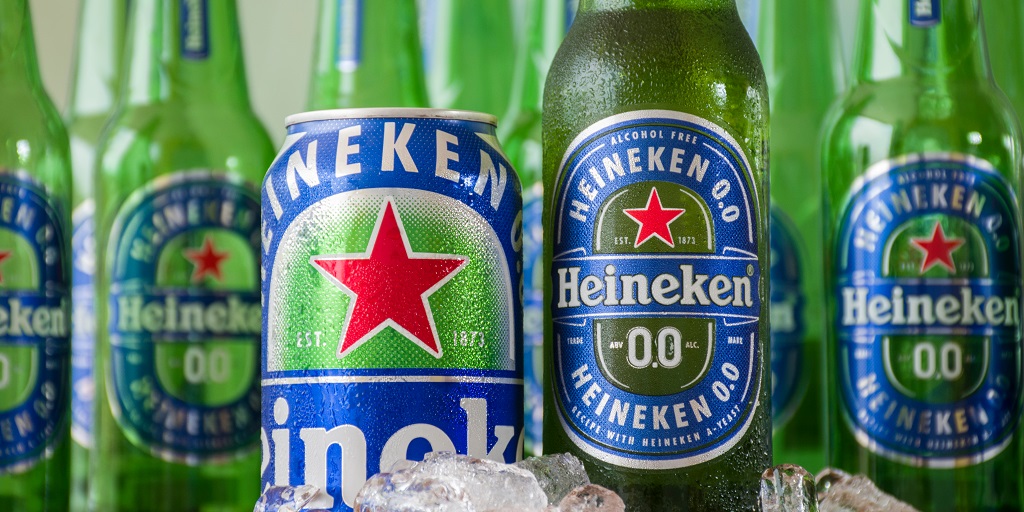
Dry July and the challenge of zero alc

During Dry July, customers are looking to cut out the alcohol completely either not going out and drinking any alcohol at all, or moving to non-alcoholic versions of their favourite drinks.
There has been a lot of discussion about health and wellness trends in recent years, which have prompted the emergence of abstinence months like Dry January, FebFast, Dry July and Ocsober. In turn, this has seen discussion on the role they have in the evolution of craft beer, as everything from processes to marketing become more ‘mainstream’.
One of the biggest trends in craft beer right now is of course no-alcohol beer, with Modus Operandi launching Nort and Bridge Road Brewers’ Free Time joining no-alcohol brands like UpFlow, Heaps Normal and Sobah, not to mention offerings from the major brewers such as Great Northern Zero.
It’s a safe bet for retailers so far – according to sales data from the Endeavour Group, sales of non-alcoholic drinks have grown 83 per cent in the last 12 months.
Endeavour Group’s head of merchandise transformation Bree Coleman said this surge was because customers want to ‘moderate’, a reflection of the broader trend of Australians “drinking less but better”.
This is a frequent narrative in the wider beverage industry, and one that has triggered craft beer’s emergence in new categories, from seltzer and kombucha, to gluten-free or reduced beers. It’s also a perception that is prompting business decisions at the brewery level.
Are Australians drinking less, but better?
A recent report from IRI Worldwide found that instead of focusing on weight loss and fad diets, attitudes are shifting to moderation and avoidance of particular ingredients in all areas of food and drink.
Organisations such as the Alcohol Beverages Australia industry body and drinks giant AB InBev have highlighted this “drinking less but better” trend in recent years, and current statistics seem to corroborate it, particularly in certain demographics.
The Australian Institute of Health and Wellbeing last month also revealed that the proportion of young people aged 14 to 24 drinking at lifetime risky levels almost halved, from 25 per to 13.1 per cent between 2001 and 2019. 38 per cent of young people had not consumed alcohol in the previous 12 months, it found.
The AIHW’s latest study on alcohol, tobacco and illicit drug use in Australia found that overall there has been a decline in the proportion of Australians exceeding the NHMRC guidelines for lifetime risk by consuming more than 2 standard drinks per day, it said.
At the same time, revenues in the alcohol industry have been rising, as evidenced by the profit increases at Endeavour Drinks Group and Coles Liquor bottleshops. This was particularly the case over the pandemic period.
Retailers however suggested that sales growth began to slow following the lifting of the majority of restrictions, although it remains to be seen what impact the latest lockdowns will have on alcohol sales.
Anti-alcohol lobby group the Foundation for Alcohol Research and Education highlighted this increase in revenue recently in the state of Victoria specifically.
Both FARE and the Cancer Council were contacted for any commentary or research on these issues but Brews News was told they had nothing to provide.
In the meantime, FARE has been busy with its $25 million grant from the Australian Government which was agreed quietly in June 2020 to raise awareness of Foetal Alcohol Spectrum Disorder (FASDs) and also attempting to emphasise the links between cancer and alcohol, launching a marketing campaign with funding from the ACT Government’s Health Promotion Grants Program.
The latter despite recent findings from the World Health Organisation declaring that in rankings of deaths by non-communicable diseases, Australia ranks sixth lowest in the world.
This is the landscape in which brewers are currently operating, in which the relationship between alcohol and health are being scrutinised and lead to major changes in consumer trends.
Use case for no alcohol
If brewers are not only to survive but flourish in a world focused on health and wellbeing, no alcohol beers are a way to tap into these trends towards moderation.
Dr Brent Coker, researcher and lecturer of marketing at the University of Melbourne, said there were use cases for no-alcohol beer which meant it potentially had some longevity in the market.
“It’s certainly taking hold. Usually with these types of things there’s demand. With all the breweries are getting on board with this, we know that consumers want this kind of thing.
“In some countries it’s really taking off, in Germany for instance where they have had Zoom meetings at work sipping on zero alcohol beer.
“Is it a replacement for beer? I’m not sure about that, but it widens the number and type of occasions you can consume it.”
Dr Coker also highlighted the cyclical nature of trends, and that no and low alcohol beer were a staple of diets historically, as a replacement for contaminated water.
“Before the World Wars, water was dodgy and you could get sick from it and that drove the trend towards lower alcohol beers. But it wasn’t the standard beer we have now, it was really low alcohol to give to workers at only like 2 per cent beer, so they were not drunk and working.
“Beer historically has had a place as a thirst quencher rather than a social buzz, in the way that people have been using it for the last 50 years.”
The fact that no-alcohol beer has been in supermarkets and bottleshops for decades has also meant that consumers are not being introduced to it totally blind, but the introduction of craft brewers to the market could change things.
“There’s always been zero alcohol beer in the supermarkets, mainly belonging to the mainstream brands,” Dr Coker acknowledged.
“But if there is a craft beer version then consumers are going to be drawn to that. There is a perception of better quality there – that’s what craft brewers have [to differentiate themselves].”
This also comes down to consumer perceptions of the no-alcohol beer category.
“If you look at the way consumer perceptions on how they evaluate products, it’s not just the taste, but the visual perceptions and many other things on which they make assumptions about what they’re buying.
“The haze in hazy beers for instance can signal that it’s more ‘natural’ in some sense, which ties into a general trend towards natural products in general.”
On the flipside, the lack of alcohol could change expectations about price points.
“That’s a danger, consumers do think it should be cheaper because of conditioning [with cheaper mainstream no alcohol options]. And when consumers are used to something it’s hard to shift their way of thinking.”
“However, if you differentiate sufficiently, if I was a brewer I’d be emphasising that it’s fresh beer, or the quality of the ingredients for instance.”
A number of brewers are doing just that.
The price of health and wellness
A host of breweries have invested in no-alcohol as a brand, which raises a number of issues for brewers, not only in how to execute such a feat – which many have been tight-lipped about – but also where their offerings sit in the market in terms of price and category, and what the potential for the no-category is in the long term.
“When we launched, there weren’t any other products out there we could price line with,” explained Clinton Schultz of Sobah Beverages, the Indigenous-owned no-alcohol brand made with native ingredients which has recently bought its own pasteuriser.
“We looked around at other no-alcohol (NA) craft beverages like kombucha and handmade sodas and juices. We saw that the price point was about $5 to $6 per can or bottle, and figured that a NA craft beer should be priced much similarly.”
Sobah also differentiates itself in terms of ingredients, and Clint Schultz explained that native foods can range from $25 to $250 per kilogramme, or more. This in part can justify a higher price point, even though consumers may expect no-alcohol alternatives to be cheaper, due to lack of excise being paid.
“Sobah features Australian native foods, which are exotic products and costly. Consumers have said ‘but non-alc don’t have the excise tax…’ but what we do have is more ingredients and unique ingredients,” Schultz said.
“We don’t get much push back, but we do have people recommending beers based on pricing – ‘Sobah is the best but XYZ is cheaper’.”
Others have looked to different crossover trends in the market, with Nort for instance marketing itself as “plant-based” – a signal to a specific subset of the health and wellbeing segment. In a way, it is all about the brand positioning and setting customer expectations from the beginning.
“NA beer that is mass produced by large companies is going to be cheaper – you know the saying “you get what you pay for” – and there are some decent ones for a lower price,” Schultz said.
“However, craft beer is made differently. Smaller batches and more handling, having to use more ingredients to get the fuller flavour profiles, it all adds up.”
Ben Kraus at Victoria’s Bridge Road Brewers agrees, and said that people should not compare no-alcohol beers with soft drinks when it comes to price, and that Bridge Road has the same profit margins with its no-alcohol option as its alcoholic beer.
“People should compare the price of their AF choice with the price of the beer or other beverages they would purchase from a similar sized company,” Kraus said.
“How do you reconcile that when coming up with pricing? We are still brewing, fermenting, packaging and distributing a beer from scratch, we are simply removing the excise component from our prices.”
Jaz Wearin at Nort, Modus Operandi’s no-alcohol brand which launched in September 2020, agreed.
“The only difference between non-alcoholic and alcoholic beers is excise,” she said.
“Otherwise the way we craft Nort is like making any alcoholic beer. The ingredients (malts, hops, yeasts), packaging, logistics, overheads and team (sales, production, marketing etc) are the same cost as an alcoholic beer.
“We have priced Nort competitively with the premium non alcohol market and our cost base as a family business to ensure Australians can enjoy an Aussie owned and brewed non-alc beer that is 100 per cent crafted without getting a price-induced hangover.”
Hear more about Nort from Jaz Wearin on the Beer is a Conversation podcast.
“Consumers are savvy – they tell us all the time that us brewers have been constantly telling them that 30 to 40 per cent of our wholesale cost is in fact government tax such as excise, so this should be removed from the shelf price of non alc beers, in a perfect market.
“Some companies, whether brewing their own products or not, have chosen to, like we have done at Nort as there is no excise applicable. Others haven’t – for a multitude of their own reasons.”
The reality is that Nort does not want to scare customers with shelf pricing above $18 for a four-pack, she explained.
“Our RRP for a Nort six-pack is $14 to $16 or about $50 a case of 24,” Wearin said. “The lack of excise in non alcs is a key part of that price differential between alcoholic beers.”
As for the future of the no-alcohol beer, these brewers have invested time and effort, but also market research in understanding the category.
“[No alcohol growth] will be in line with what I have seen in Europe,” said Kraus.
“It only just started in the craft space yesterday, and if I know anything about our industry we’ll go from 12 options to 100 within the year, this alone will drive the growth, with craft brewers themselves influencing their own market.
“It will no doubt continue to grow. To the point where you will see or be offered an AF option at every social gathering you attend. It will be normal and acceptable to be offered something non alcoholic in the beer space whenever you catch up for a social occasion.”






